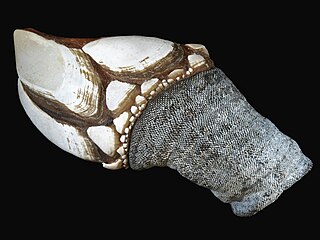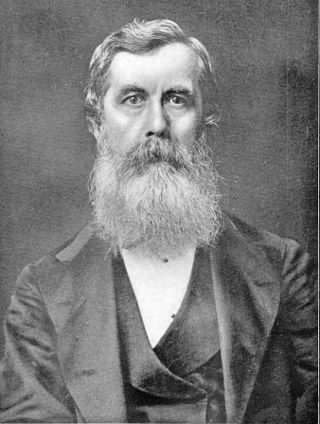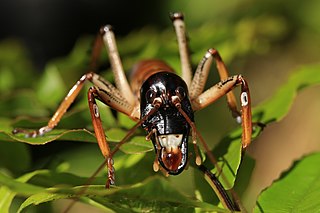
Goose barnacles, also called stalked barnacles or gooseneck barnacles, are filter-feeding crustaceans that live attached to hard surfaces of rocks and flotsam in the ocean intertidal zone. Goose barnacles formerly made up the taxonomic order Pedunculata, but the group has been found to be polyphyletic, with its members scattered across multiple orders of the infraclass Thoracica.

Thoracica is an infraclass of crustaceans which contains the most familiar species of barnacles found on rocky coasts, such as Semibalanus balanoides and Chthamalus stellatus. They have six well-developed limbs, and may be either stalked or sessile. The carapace is heavily calcified. The group includes free-living and commensal species.
William Stephen Atkinson was a British lepidopterist who worked for much of his life in India.

The spotted bush warbler is a species of Old World warbler in the family Locustellidae. It is found in the northern Himalayas, Yunnan and central China, in the countries of Bangladesh, Bhutan, China, India, Myanmar and Nepal. Its natural habitat is arboreal forests.

The white-bibbed babbler is a species of bird in the family Timaliidae. It is found in Bali and Java.

Mahoba is a genus of moths in the subfamily Lymantriinae. The genus was erected by Frederic Moore in 1879.
Abrostola anophioides is a moth of the family Noctuidae first described by Frederic Moore in 1882. It is found in South-east Asia, including Darjeeling and Taiwan.

Frederic Moore FZS was a British entomologist and illustrator. He produced six volumes of Lepidoptera Indica and a catalogue of the birds in the collection of the East India Company.

Lepidoptera Indica was a 10 volume work on the butterflies of the Indian region that was begun in 1890 and completed in 1913. It was published by Lovell Reeve and Co. of London. It has been considered the magnum opus of its author, Frederic Moore, assistant curator at the museum of the East India Company. Frederic Moore described a number of new species through this publication. Moore was a splitter, known for careless creation of synonyms, sometimes placing the same species in more than one genus.

Belippa is a genus of moths in the family Limacodidae erected by Francis Walker in 1865.

Iambia transversa is a moth of the family Noctuidae first described by Frederic Moore in 1882.

Viridistria is a genus of moths of the family Noctuidae.
Viridistria striatovirens is a moth of the family Noctuidae first described by Frederic Moore in 1883. It is found in India.

Chamaesipho brunnea is an intertidal barnacle common in New Zealand, in both the North Island and the South Island. Juveniles have six shell wall plates, reducing to four in adults, and with age, all plates become concrescent, with no trace of sutures inside or out. Shell is brown colored. The related, and sometimes associated Chamaesipho columna is much smaller in size, by nearly half, while Elminius, which can associate with both species, also has four shell wall plates, but plates remain distinct at all stages. The shell of C. columna corrodes to a pitted surface, while that of C. brunnea has a lamellar corrosion.

Chamaesipho columna is the type species for the barnacle genus Chamaesipho. Originally, species concept, as refined by Darwin472 consisted of C. columna. Spengler's 1790 description included specimens from "Otaheite" (Tahiti), which were far larger than any of the three described species. As Chamaesipho is restricted to Australia and New Zealand, and Spengler's Tahiti material lacked opercular plates, it is no longer included as Chamaesipho. Spengler's written description agrees with Chamaesipho.472 Spengler's Tahiti material is thought to be New Zealand Epopella, mislabeled.

Hemideina thoracica, commonly known as the Auckland tree wētā or tokoriro is a cricket-like insect. It is endemic to New Zealand and is found over most of the North Island, except for the Wellington region and regions 900 metres above sea level. This species is an arboreal, herbivorous generalist however, it is also thought to be polyphagous and is found in all wooded habitats, including forest, scrub and suburban gardens.
Amata thoracica is a moth of the family Erebidae. It is found in Sri Lanka, mostly from wet zone forests.

Mimathyma chevana, the sergeant emperor, is an Indomalayan butterfly of the family Nymphalidae. The species was first described by Frederic Moore in 1865.
Sepsis thoracica, more commonly known as the black scavenger fly, a species of fly from the genus Sepsis and the family Sepsidae. It was discovered by Robineau-Desvoidy in 1830. It resembles a small flying ant. The fly is most commonly found inhabiting cow dung.














